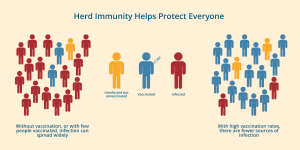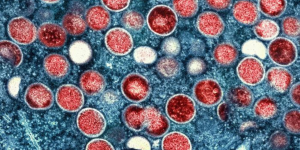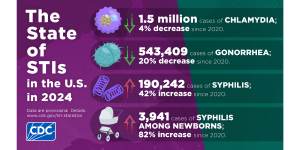
The Science is Still Clear—Vaccines Work
The Centers for Disease Control and Prevention (CDC) recently made striking changes to its online information about the connection between vaccines and autism that put the agency on the wrong side of science.

Bacterial vaginosis (BV) is a common gynecological infection. BV is caused when the “good” and “bad” bacteria that naturally live in the vagina become out of balance. Some women will have no symptoms of a BV infection, but others may experience itching, irritation, and abnormal discharge. BV is not a sexually transmitted infection (STI), but when left untreated it can increase the risk of contracting other STIs including chlamydia, HPV, and HIV.
A new study from Albert Einstein College of Medicine, Roswell Park Comprehensive Cancer Center, and the Icahn School of Medicine at Mount Sinai looked at the vaginal microbiome of young women to try to better understand the link between BV and STIs. It found that there are two distinct types of BV infection, one of which increases the risk of chlamydia infection. The researchers think this discovery could one day change how we screen for and treat BV.
Researchers recruited 560 adolescent and young adult women who were Black or Latina. Both BV and chlamydia are more common among women in these communities. They took samples of vaginal and cervical fluid from participants who did not have chlamydia, from those who had a current infection, and from those who had recently been treated with antibiotics. DNA sequencing of the samples allowed them to identify the two types of BV.
Dr. Robert Burk, who served as co-lead on this study, explained, “This research shows that specific changes in the cervicovaginal microbiome set the stage for chlamydia. And it shows that targeting treatment against the more-dangerous BV subtype could potentially prevent many women from developing chlamydia, which is particularly prevalent in historically underserved communities.”
Health care providers don’t yet have the technology to test for which type of BV a person has, but Burk and his colleagues envision a future where there is more regular testing for BV and high-risk types are treated immediately. “We can now determine which BV cases are most worrisome and should be closely monitored. Detecting and treating these infections could substantially reduce the incidence of chlamydia and its serious consequences including pelvic inflammatory disease, infertility, and miscarriage,” Burk explained.
More research has to be done, however, before this can become the standard for testing and treatment.
In the meantime, it’s important for women to see a provider whenever they have symptoms of vaginal itching, burning, or irritation. It could be a yeast infection, BV, or an STI such as chlamydia or gonorrhea. Getting diagnosed and treated as soon as possible can relieve symptoms, prevent long-term complications, and help stop the spread of STIs.
It’s also important that people who are sexually active get regularly tested for STIs like chlamydia or gonorrhea because they often have no symptoms. The CDC recommends, for example, that sexually active young women under 25 get screened for chlamydia at least once each year.

The Centers for Disease Control and Prevention (CDC) recently made striking changes to its online information about the connection between vaccines and autism that put the agency on the wrong side of science.

A new report from the World Health Organization (WHO) warns of rising levels of drug-resistant gonorrhea. The data comes from reported cases of gonorrhea in 12 countries across five WHO regions.

We’ve known for years that the HPV vaccine works. Now new research shows that widespread vaccination even protects those who haven’t gotten the shot. This study proves that it is possible to reach herd immunity for HPV.

A more serious type of mpox may be spreading California. Three people in the state were hospitalized with the virus.

ASHA announces Rebecca (Becca) Karpinski as the Interim President and CEO of ASHA.

HPV is one of the most common sexually transmitted infections. Still, finding out that you or your partner has it can feel stressful and confusing. It’s normal to have a lot of questions: What does this mean for our health? Did someone cheat? Should we

Just like the people to whom they’re attached, penises come in all shapes and sizes (some would even argue personalities, but that’s beyond our scope here). Condoms come in different shapes and sizes as well, so anyone can find a condom that’s right for them.

The CDC just released STI Surveillance Data for 2024 that show cases of chlamydia, gonorrhea, and syphilis are slowly declining.
ASHA believes that all people have the right to the information and services that will help them to have optimum sexual health. We envision a time when stigma is no longer associated with sexual health and our nation is united in its belief that sexuality is a normal, healthy, and positive aspect of human life.
ABOUT
GET INVOLVED
ASHA WEBSITES
GET HELP
© 2025 American Sexual Health Association